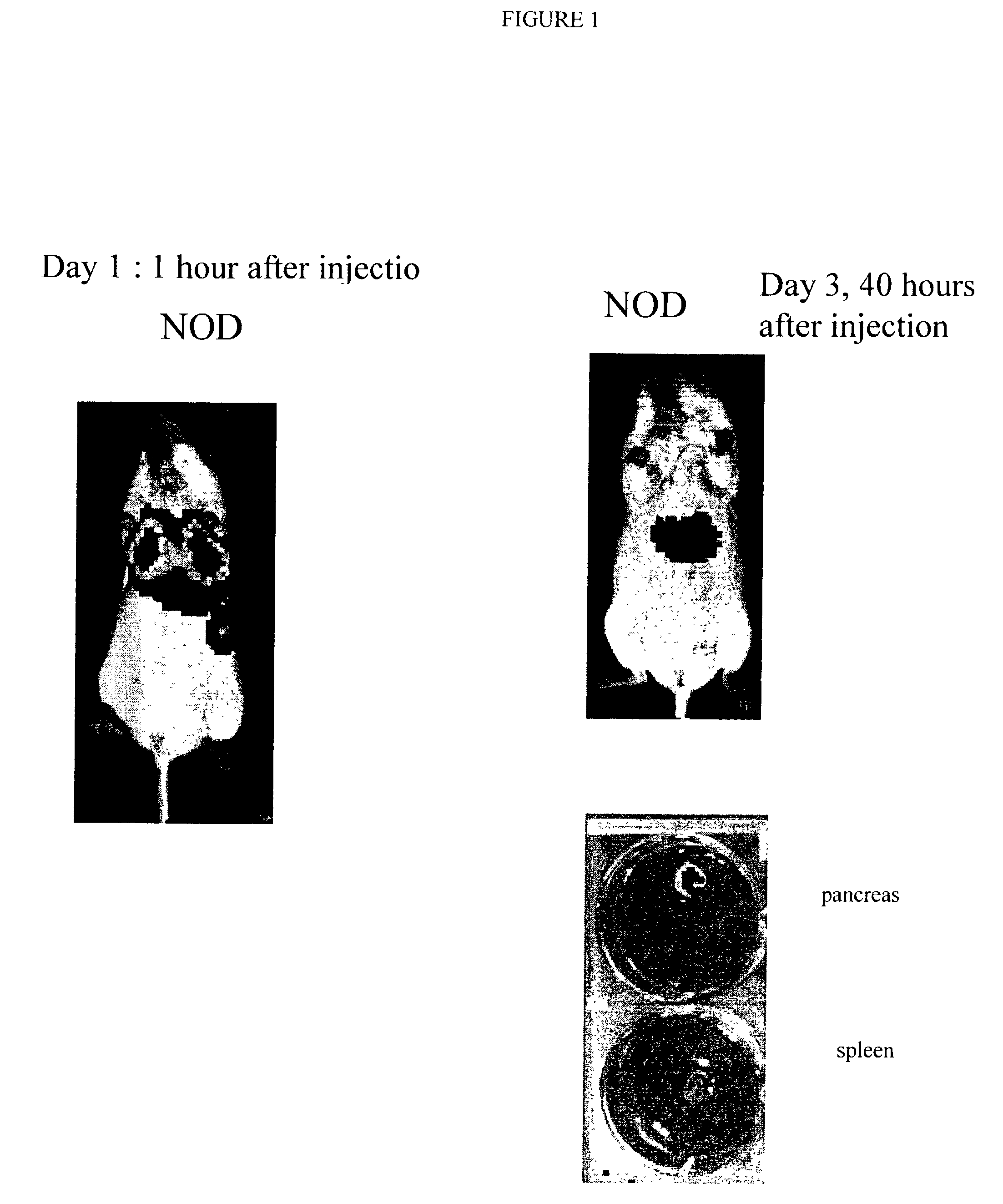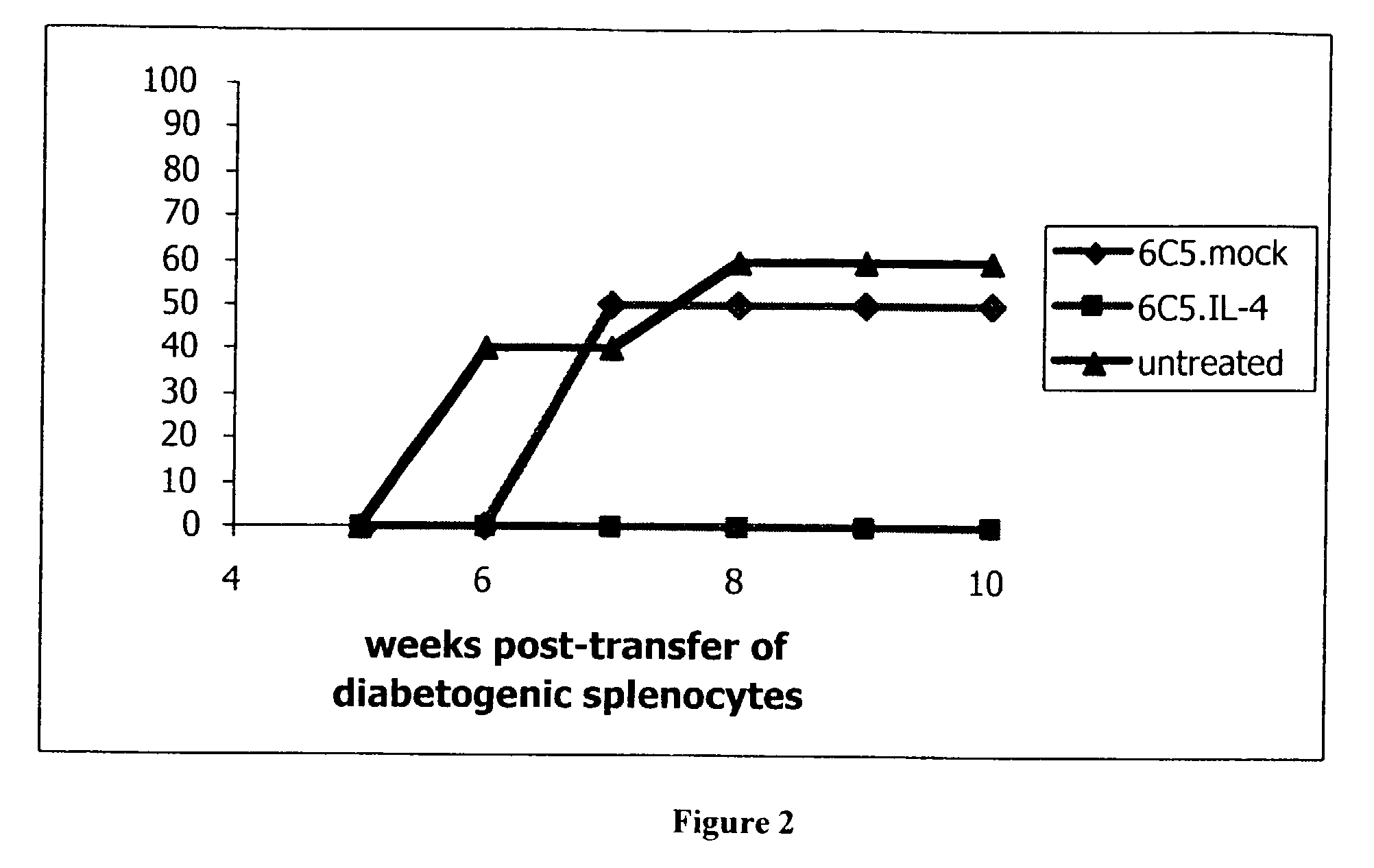Gene therapy for the prevention of autoimmune disease
a gene therapy and autoimmune disease technology, applied in the direction of biocide, antibody medical ingredients, peptide/protein ingredients, etc., can solve the problem of autologous tissue destruction
- Summary
- Abstract
- Description
- Claims
- Application Information
AI Technical Summary
Benefits of technology
Problems solved by technology
Method used
Image
Examples
Embodiment Construction
[0011]Suppressive agents are delivered to the site of an autoimmune disease by introducing an expression vector encoding the suppressive agent into cells targeted for such sites, and introducing the cells in the host. In one embodiment of the invention, the targeted cell is a T cell or T cell hybridoma that is specific for an autoantigen. Autoantigen-specific T cells have tissue-specific homing properties, which provides them for the local delivery of immunoregulatory molecules. Autoantigens, as used herein, are endogenous proteins or fragments thereof that elicit a pathogenic immune response. Of particular interest are autoantigens that induce a T cell mediated inflammatory pathogenic responses, such as multiple sclerosis, experimental autoimmune encephalitis, rheumatoid arthritis and insulin dependent diabetes mellitus. In another embodiment, the targeted cell is a dendritic cell. Another route for gene delivery is retrograde transduction, e.g. via the common bile duct through can...
PUM
| Property | Measurement | Unit |
|---|---|---|
| Bioluminescence imaging | aaaaa | aaaaa |
| photon emission | aaaaa | aaaaa |
| hydrophobicity | aaaaa | aaaaa |
Abstract
Description
Claims
Application Information
 Login to View More
Login to View More - R&D
- Intellectual Property
- Life Sciences
- Materials
- Tech Scout
- Unparalleled Data Quality
- Higher Quality Content
- 60% Fewer Hallucinations
Browse by: Latest US Patents, China's latest patents, Technical Efficacy Thesaurus, Application Domain, Technology Topic, Popular Technical Reports.
© 2025 PatSnap. All rights reserved.Legal|Privacy policy|Modern Slavery Act Transparency Statement|Sitemap|About US| Contact US: help@patsnap.com



